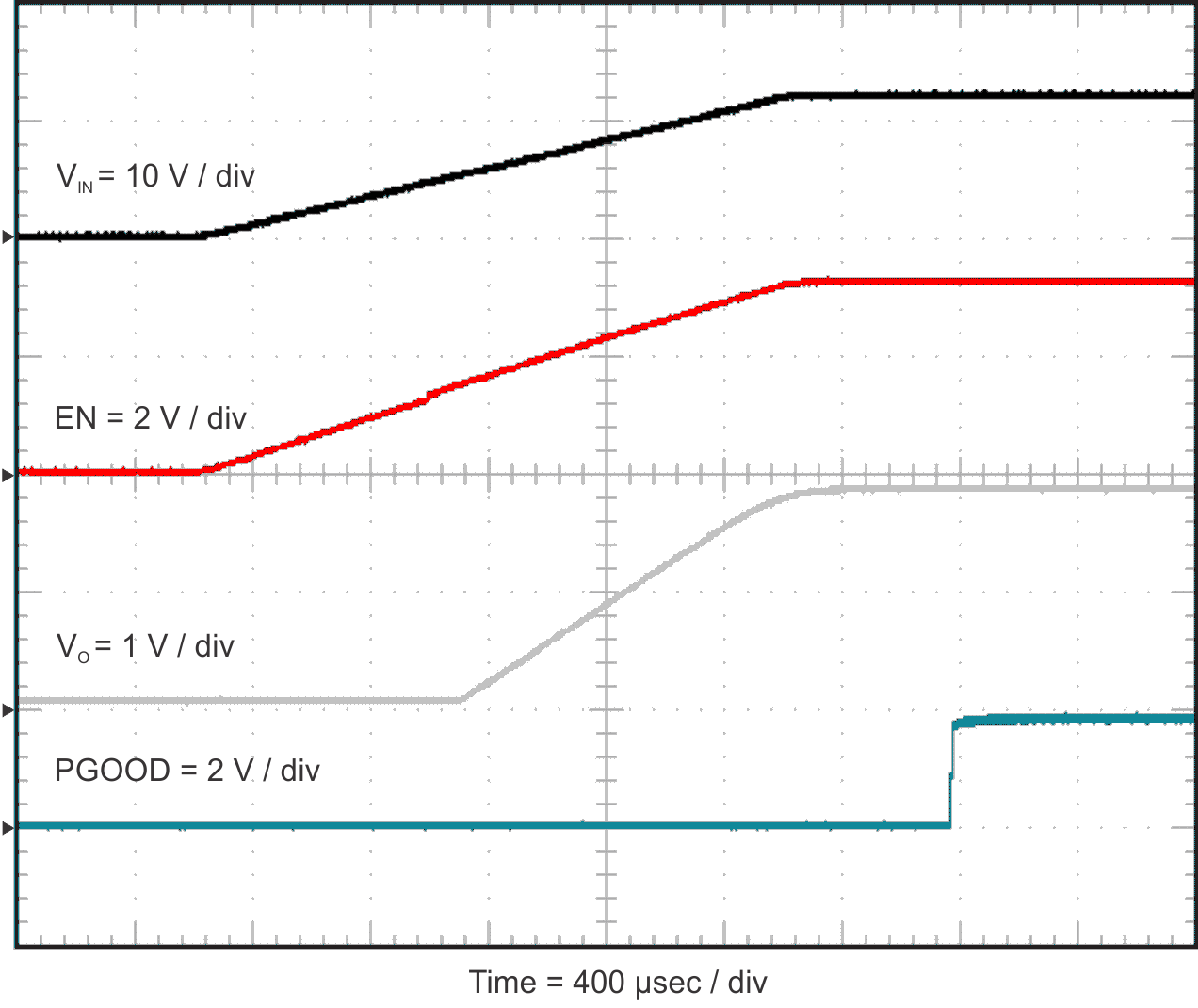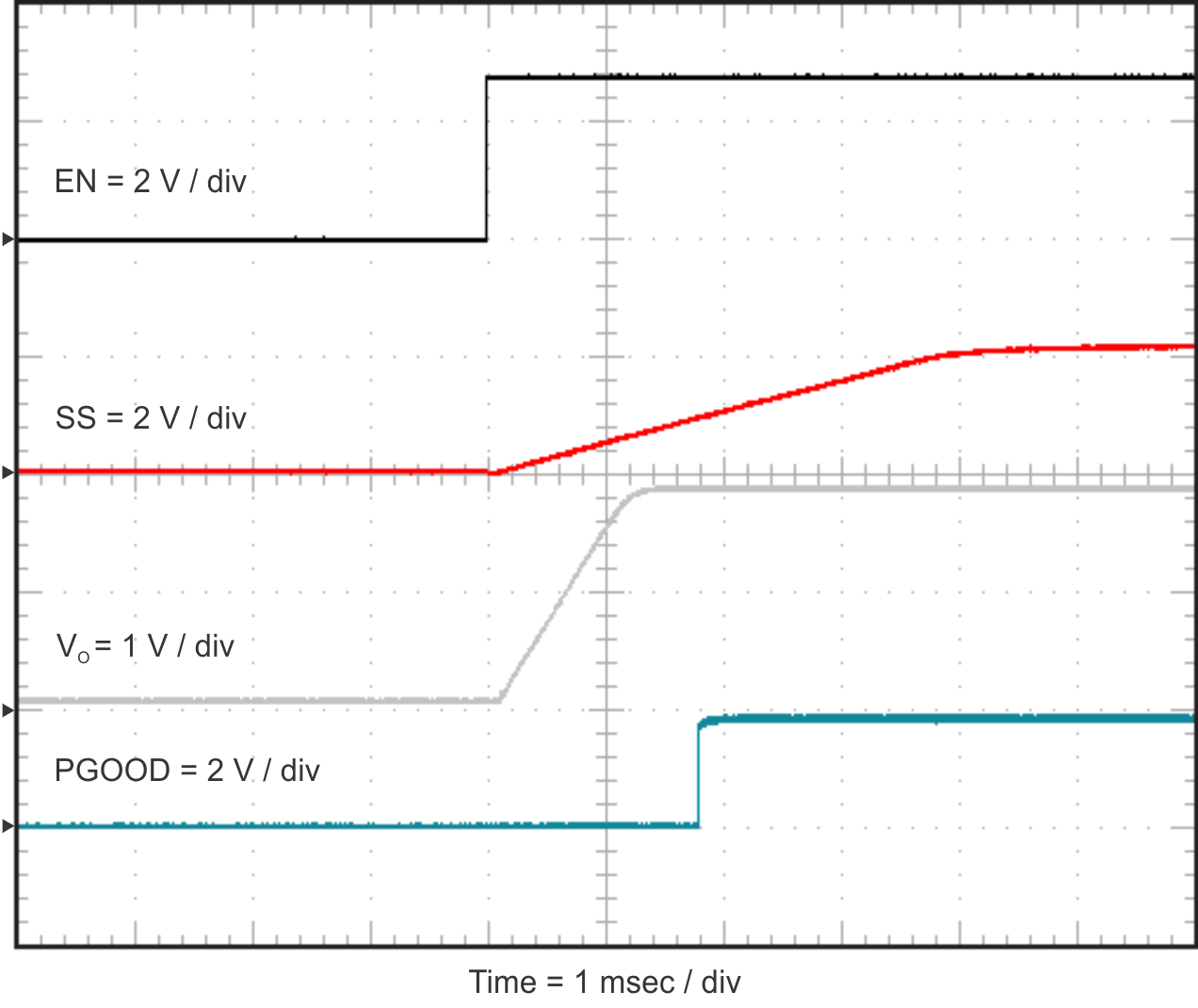SLVUB56A July 2017 – September 2021 TPS54424
2.7 Powering Up
Figure 2-12 and Figure 2-13 show the start-up waveforms for the TPS54424EVM-779. In Figure 2-12, the output voltage ramps up as soon as the input voltage reaches the UVLO threshold. In Figure 2-13, the input voltage is initially applied and the output is inhibited by pulling EN to GND using an external function generator. When the EN voltage is increased above the enable-threshold voltage, the start-up sequence begins and the output voltage ramps up to the externally set value of 1.8 V. The input voltage for these plots is 12 V and the load is 1 Ω. Alternatively, a jumper at J3 to tie EN to GND can also be used. When the jumper is removed, EN is released and the start-up sequence will begin.
 Figure 2-12 TPS54424EVM-779 Start-Up Relative to VIN
Figure 2-12 TPS54424EVM-779 Start-Up Relative to VIN Figure 2-13 TPS54424EVM-779 Start-Up Relative to Enable
Figure 2-13 TPS54424EVM-779 Start-Up Relative to Enable